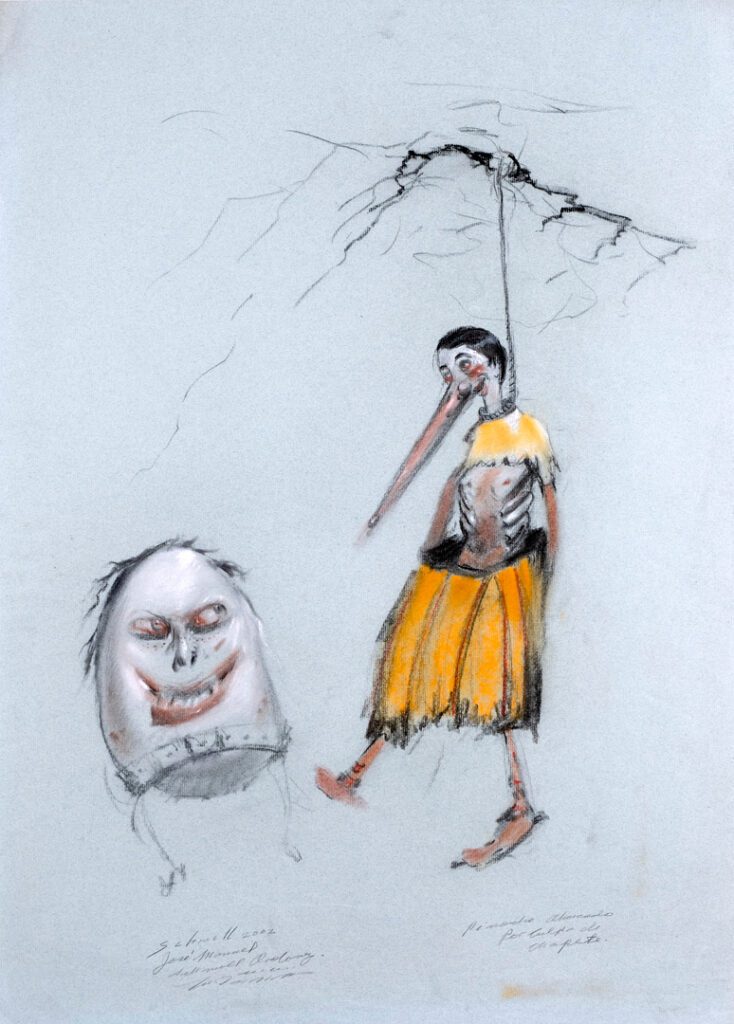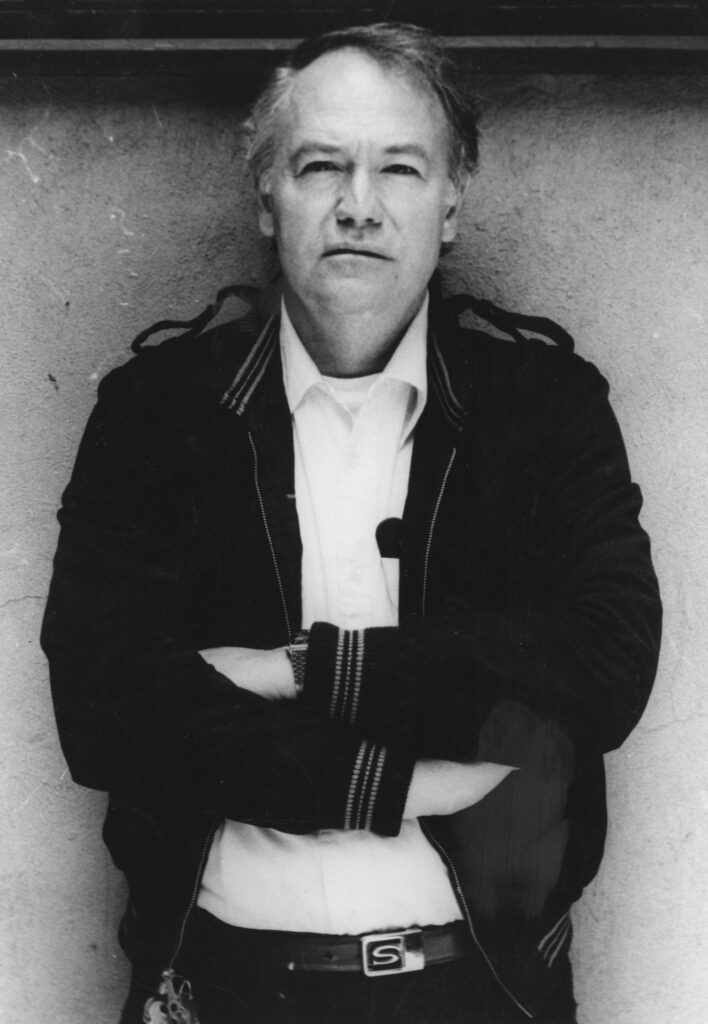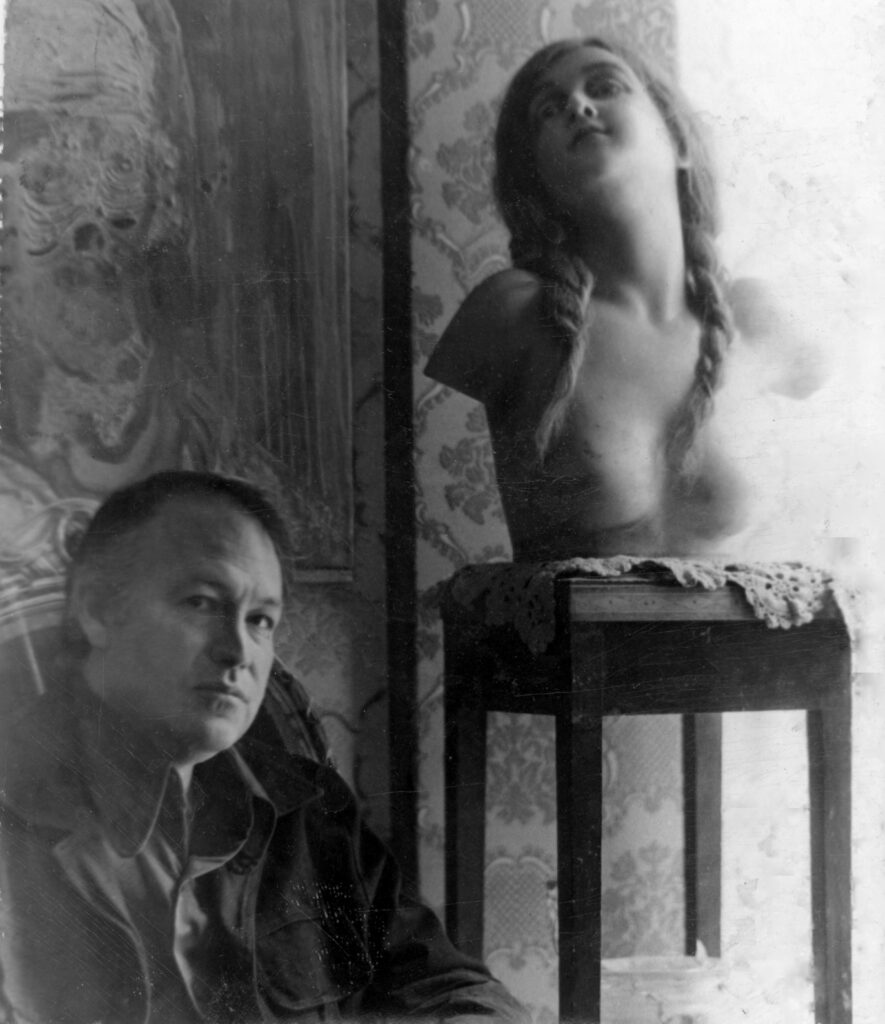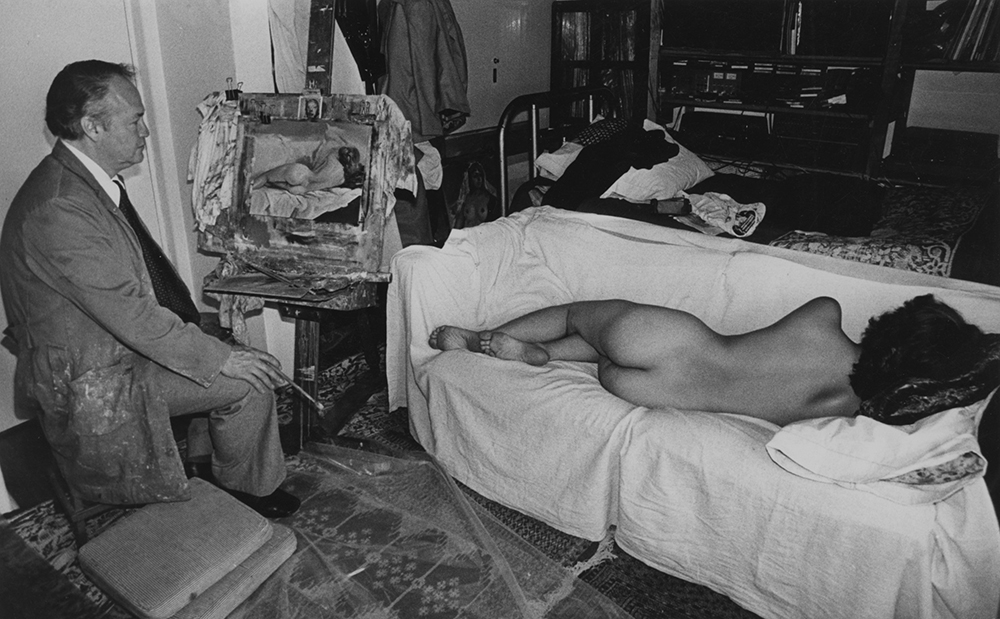Jose Manuel Schmill, known to his friends as “Chapete” thanks to the Pinocchio and Chapete comic strips of his childhood, always went beyond the confines of his imagination.
Convinced of his creative vocation from an early age, his family strongly supported his inclination towards art. Later on, his artistic training was under the tutelage of Jose Bardasano Baos. Schmill painted every day since, his existence shaped by the alchemical transmutations that take place at the threshold of reality.
A creator of incredible dimensions, Schmill produces images that violently embed themselves deep within their viewers, after penetrating the astonished eyes of those who approach them with the sole intention of having an artistic experience without intuiting that this can become a devastating, almost lethal encounter.
Schmill’s paintings oscillate between the hyperrealistic sensuality with which he approaches the subtle forms of the female nude, where his brushstrokes speak of the purest devotion to beauty, and the ability of the pendulum of his creativity to caress the world of landscapes as well. Within this genre, the distorted mood translates the multiple faces of nature to bring us traces of the permanence of life through the filters of alienation. The universe flutters in his images, where bodies and blankets, stones and skies cease to be forms and become the substance of the calm and the storm, of a soul that roars its condemned existence with a superhuman force capable of ripping out our insides.
As an example of Schmill’s extraordinary and refined technique, portraiture constitutes one of the extremes of this creative pendulum, where a swing in the opposite direction leads us to the perverse conception of his original and even abominable characters. There, in that empty point over the abyss, the only murmur that can be perceived, and that serves as a conductive thread of every theme, is death.


Devoted to his instincts and anguished by the catastrophe to which humanity is irremediably heading, Schmill captures the horror he feels at the idea of destruction produces in him. Giving form to the end through the painful gaze of his creations, Schmill offers us flesh manhandled by the rotten bones of death, the fierce protest of the deceased who are not resigned to remain in such a state of corruption, and their uncertainty before their own state.
In each painting, Schmill confronts our humanity, notions of permanence and beliefs, where the darkness of being acquires its own voice through passionate forms and sharp strokes to embody terminal poetics.
Schmill’s images are moments, acid poetry that seeps into the bloodstream, that bursts the hardened husk of the heart of one who has dared to contemplate his own fears via the absolute truth that emerges in his colors.
Thus, in a type of exorcism, the artist dies in the breath of each brushstroke, moving with each one into the dark caves of his other reality.
Shards of death, slices of hell, crystals of black sun contrast wildly with diaphanous nudes in which women take on the dimensions of a temple.
Inhabited entirely by loneliness, the work of this genius is the product of an obsessive creative discipline innocently disguised as freedom. In a self-imposed exile, our Steppenwolf, who gives form to the reasoning of Schopenhauer, Cioran and Marcel Schwob to reinforce his thinking, has a deep love for life. This howl of love is what Schmill gives us in each work.
A vampire with the soul of a child, he plays at being god and laughs at the power with which the ways of the world manifest themselves. A lover taken prisoner by the elixirs of desire, expert connoisseur of the cartography of the flesh, he has traveled the suburbs of perversion, the shades of ecstasy; but above all, like every creature in evolution, like every hero, he has also succumbed to the jaws of the swamps of fear.
His courage to go through a painful existence and a reality that he never felt he belonged to or accepted, acquires strength when he adopts the mission as an artist to point out the horrors of the human condition, as well as the sublimation of beauty, with unique mastery.
According to a vision he had in childhood, from among the colored rays of the universe he was chosen and attracted by the red ray, and thus, inhabited by its energy, his work and, naturally, his life were impregnated with the qualities of this intensity, experiencing situations on his path that ranged from the deepest love to anger, despair and pain in their most indescribable forms. This being, from his perspective, an explanation of why he has always been inclined to express extreme emotions in his art, following the impulses of his powerful heart, his volcanic, passionate, tragic, vibrant and definitely always on-fire nature.
His immense love for life is reflected in his work, both in the pain produced by decadence, non-existence and dissolution, as well as in the mystical beauty and peace of his landscapes, and also in the sensual and erotic caress of each brushstroke of the fingers of his soul in his female nudes. His desire for permanence in the face of a changing reality that only offers uncertainty, is the engine that drives him to live to the fullest, even in fear, to give himself totally, to enjoy his virtues and to share his extraordinary talent with the world.


The powerful transcendence of the work of the Master José Manuel Schmill consists of a complete honesty, a work whose truth transmits a peculiar view of the universe, which goes beyond time and space, making it always valid, because in the contemplation of the visions of his paintings, the eternal spirit of humanity, of the divine, of what cannot be described with words, is revealed; it is the soul in alchemy in each stroke, the colors that shout its poetry.
It is wonderful that the work of the Master José Manuel Schmill continues to have an impact, moving and seducing the world, as it is thanks to its dissemination that, every day, more people enjoy the privilege of seeing the internal experience of such an enigmatic artist and feeling a connection with the truth, with the origin, with what we are and have always been, an eternal lightning, the spirit of all that is sacred.
